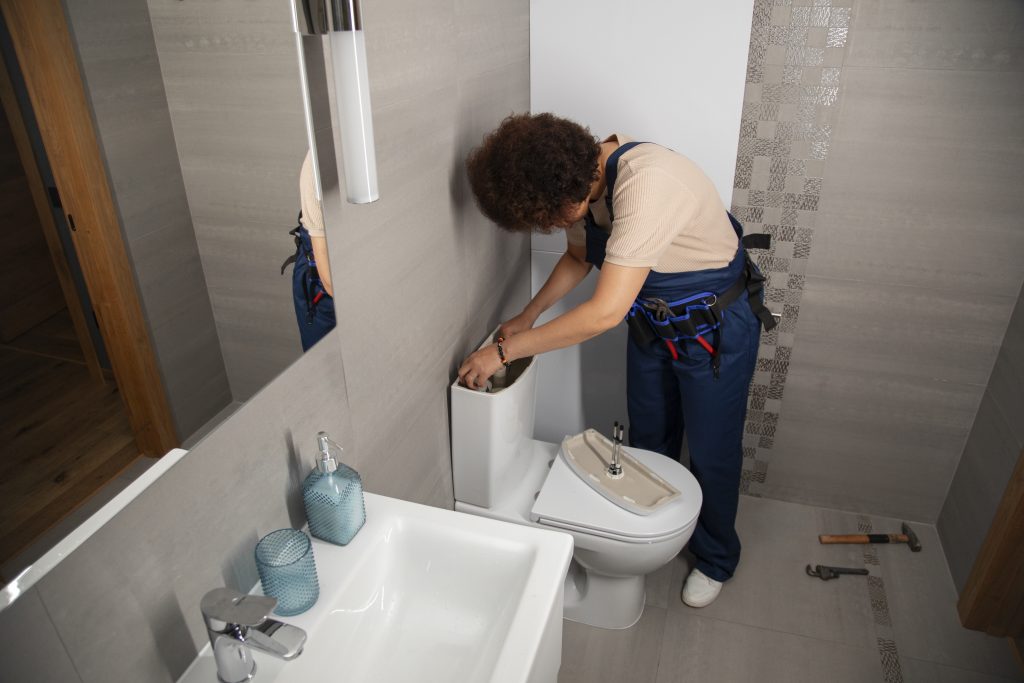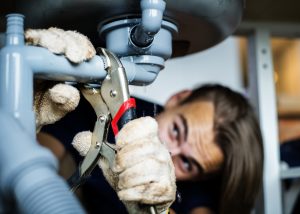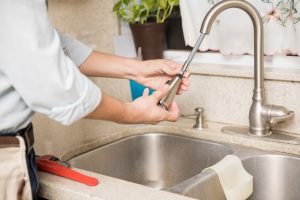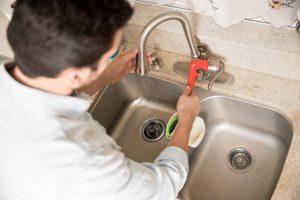Toilet Keeps Running After Flushing? Here’s Why and How to Fix It Easily
Have you ever flushed your toilet, left the bathroom, and still heard the sound of running water minutes later?
That soft, constant hiss isn’t just annoying, it’s wasteful. A toilet that keeps running after flushing can waste hundreds of litres of water every day, driving up your bills and damaging the environment.
The good news is that this is one of the most common household plumbing issues, and often one of the easiest to fix.
You don’t need to be a plumber to diagnose or repair it. With a bit of guidance, you can understand what’s happening, stop the water flow, and keep your toilet working efficiently again.
This complete guide (developed with insights from experts at EPG247) will help you understand:
> How your toilet system actually works
> Why your toilet keeps running
> Step-by-step solutions to fix it
> When it’s time to replace a faulty part
> And how to prevent this problem from happening again
How the Toilet Flush System Works
Before you can fix the problem, it helps to know what’s going on inside your toilet tank.
Modern toilets use a simple mechanism based on gravity, water pressure, and a few key components.
Here’s what happens when you flush:
- You press the handle (or button), which lifts the flapper valve — a rubber seal that holds back water in the tank.
- Water rushes from the tank into the bowl through flush holes, pushing waste down the drain.
- As the tank empties, the flapper drops back into place, sealing the hole at the bottom.
- The fill valve then opens, allowing water to refill the tank.
- When the water level rises, a float moves upward, eventually shutting off the fill valve once the correct level is reached.
If everything works perfectly, the toilet fills, stops, and sits quietly until the next flush.
But when one of those parts malfunctions, even slightly, water keeps flowing, and your toilet never fully “rests.”
Why Your Toilet Keeps Running After Flushing
A toilet that runs continuously is almost always the result of a minor internal fault.
Here are the most common causes and how they affect the system:
1. A Worn or Dirty Flapper Valve
The flapper is the rubber seal that closes the flush valve opening after you flush.
Over time, it can warp, crack, or develop mineral build-up from hard water.
When that happens, it doesn’t seal properly, allowing water to leak slowly into the bowl, triggering the fill valve to keep refilling the tank endlessly.
Quick test:
Put a few drops of food colouring into your tank and wait 15–20 minutes without flushing.
If you see colour in the toilet bowl, your flapper is leaking.
2. Float Set Too High or Too Low
The float controls how much water fills the tank.
If it’s set too high, water will rise above the overflow tube and drain constantly.
If it’s too low, you’ll get a weak flush that might trigger multiple refill cycles.
In older toilets, the float is a ball attached to a metal arm.
In newer models, it’s often a plastic cup that slides up and down the fill valve shaft.
3. Faulty Fill Valve (Ballcock or Modern Refill Valve)
The fill valve controls water entering the tank.
If it fails to close completely, due to dirt, debris, or age, it will keep sending water into the tank even when it’s full.
You’ll usually hear a constant hissing or trickling sound from the back of the toilet.
4. Chain Too Tight or Too Loose
If your flush lever chain is too short, it prevents the flapper from sealing.
If it’s too long, it can tangle under the flapper, again stopping it from closing properly.
The ideal chain length leaves a little slack when the flapper is down.
5. Leaking Overflow Tube
The overflow tube prevents the tank from overfilling.
If it cracks, water seeps into the bowl continuously.
Sometimes you can’t see the crack unless you inspect closely under bright light.
6. Sediment or Hard Water Build-up
In areas with hard water, mineral deposits form around valves, seals, and flappers.
This build-up interferes with how parts move and seal, leading to slow leaks.
Cleaning these parts with vinegar or a gentle brush often restores normal function.
How to Diagnose the Problem
Before you start replacing parts, it’s smart to run a quick test to identify what’s actually wrong.
Here’s how to inspect safely:
- Turn off the water supply. The shut-off valve is usually behind or under the toilet.
- Remove the tank lid and set it aside carefully.
- Flush once to see how the mechanism behaves.
- Watch for:
- Whether the flapper closes fully.
- If the water rises above the overflow tube.
- Whether the fill valve shuts off when the float lifts.
- Whether the flapper closes fully.
- Listen — continuous trickling means the fill valve is open; bubbling means air or debris in the line.
Once you know which part is malfunctioning, you can decide if it needs cleaning, adjustment, or replacement.
How to Fix a Toilet That Keeps Running
Below are clear, step-by-step DIY methods for each common issue.
You don’t need any special tools — just a sponge, adjustable wrench, screwdriver, and patience.
Fix 1: Adjust or Replace the Flapper Valve
- Turn off the water supply and drain the tank by flushing once.
- Remove the flapper from its hinges and inspect for wear, mineral deposits, or cracks.
- Clean the seal surface using a soft cloth and vinegar.
- If the flapper looks warped or stiff, replace it with a matching size (most are universal).
- Reattach the new flapper, ensuring it rests flat against the valve seat.
- Refill the tank and test for leaks with the food colouring method again.
A new flapper typically costs just a few pounds and lasts several years.
Fix 2: Adjust the Float Level
- Locate the float (either ball or cup type).
- For a ball float, gently bend the arm down to lower the water level.
- For a cup float, adjust the small screw or clip along the fill valve rod to set the correct height.
- Ideal water level: about 2.5 cm (1 inch) below the top of the overflow tube.
- Refill and test — the water should stop filling automatically when it reaches that level.
Fix 3: Clean or Replace the Fill Valve
- Shut off the water and flush the tank empty.
- Remove the fill valve cap and rinse it under running water.
- Use a small brush to clear sediment or debris from the valve opening.
- If cleaning doesn’t help, replace the entire fill valve assembly.
- Installation is simple, most modern valves come with clear instructions and don’t require plumbing tape.
A new fill valve improves efficiency and reduces noise too.
Fix 4: Adjust the Chain
- Remove the tank lid and check the chain connecting the handle lever to the flapper.
- Adjust its length so that there’s about 1 cm of slack when the flapper is closed.
- Test several flushes — the flapper should lift easily and close without catching.
Fix 5: Replace a Cracked Overflow Tube
- Drain the tank and disconnect the water supply.
- Unscrew and remove the old flush valve (the overflow tube is part of this assembly).
- Install a new flush valve kit, aligning it carefully with the tank hole.
- Tighten the locknut evenly to prevent leaks.
This job takes around 30–45 minutes for most homeowners.
When to Repair vs Replace

Most running toilet issues can be fixed cheaply, but sometimes replacement is more practical.
Repair if:
- The flapper or fill valve is less than 5 years old.
- The tank hardware is in good condition overall.
- The issue started recently.
Replace if:
- You’ve repaired it multiple times but the issue returns.
- There’s visible corrosion or cracking inside the tank.
- Water keeps leaking despite all adjustments.
A complete toilet mechanism replacement kit costs less than hiring a plumber once — and can extend your system’s life for years.
How Much Water (and Money) You’re Wasting
A continuously running toilet can waste an astonishing amount of water.
According to UK water authorities, a single leaking toilet can waste up to 400 litres per day — that’s the equivalent of five full bathtubs!
In financial terms, that could add £300–£400 per year to your water bill.
Beyond the cost, it’s also a major environmental issue, as clean drinking water is unnecessarily wasted.
Fixing a running toilet isn’t just about convenience — it’s about conservation and responsibility.
Preventing the Problem from Coming Back
Once you’ve fixed the issue, take a few preventive steps to keep it from returning.
- Clean the tank every few months — Use white vinegar or a mild cleaner to remove sediment and limescale.
- Inspect moving parts — Check the flapper and float regularly for stiffness or buildup.
- Avoid using harsh chemicals — Drop-in toilet tank tablets can damage seals and rubber parts over time.
- Flush only water and waste — Avoid flushing wipes, sanitary items, or anything non-dissolvable.
- Turn off the water supply during long trips — It prevents unnoticed leaks while you’re away.
Regular inspection is the best maintenance tool — it takes 5 minutes and can prevent hours of frustration later.
Safety Tips for DIY Toilet Repairs
- Always turn off the water before disassembling the tank.
- Avoid overtightening plastic parts; they can crack easily.
- Keep towels or sponges handy to catch drips.
- If you notice rust, cracks, or internal tank damage, it’s better to call a professional.
Remember, toilets are simple machines, but mistakes (like using too much force or mixing incompatible parts) can cause leaks or flooding.
Conclusion
A toilet that keeps running after flushing might seem like a small annoyance, but it’s one of the most water-wasting household problems you can have.
Luckily, it’s also one of the simplest to understand and repair.
Whether the issue is a worn flapper, a misaligned float, or a faulty fill valve, most fixes require no plumbing experience and minimal tools.
If you’ve followed the steps above, your toilet should now flush cleanly and refill quietly, just as it should.
And remember: a little maintenance goes a long way.
Regular inspections, gentle cleaning, and early detection can keep your toilet running efficiently for years.
This educational guide was created with the help of plumbing professionals from EPG247, dedicated to helping UK homeowners solve common plumbing issues safely and effectively.
FAQs
Why does my toilet keep running even after replacing the flapper?
You may need to adjust the chain length or check the fill valve — both can cause the same symptom if misaligned.
Is it dangerous to leave a running toilet overnight?
Not immediately dangerous, but it wastes a huge amount of water and can cause floor dampness if there’s an unnoticed leak.
Can I use plumber’s tape on toilet tank fittings?
Only on threaded metal connections. Most toilet tank parts use rubber seals, not threads.
How long should a toilet fill cycle last?
Typically 45 seconds to 2 minutes. Longer than that means the valve isn’t shutting off properly.
Do modern dual-flush toilets have the same problems?
Yes, though less common, both flush buttons and seals can still wear out over time.
How often should toilet parts be replaced?
Every 5–7 years, depending on water hardness and usage frequency.









